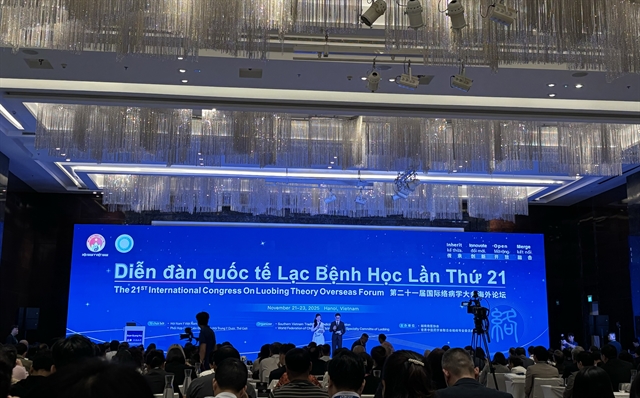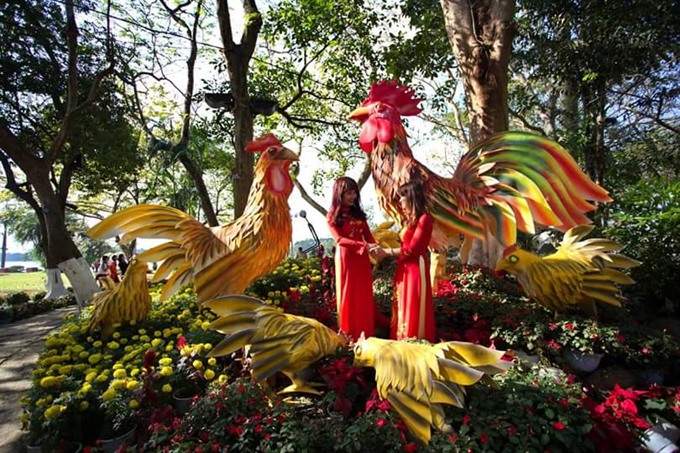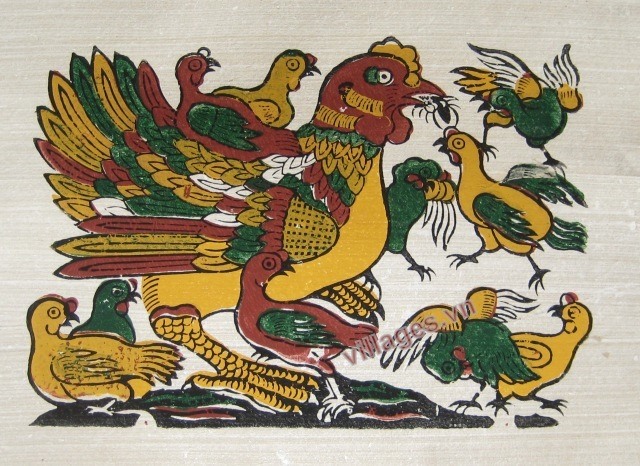 Life & Style
Life & Style

The country is celebrating the first days of a lunar new year, the Year of the Rooster, with hopes for a better year compared with the previous Year of the Monkey, which was a difficult year accompanied by disasters, unfavourable weather, as well as a challenging economic situation.
 |
| Animation of a happy chicken family set at a park in Huế to celebrate the Year of the Rooster. — VNS Photo Nguyễn Văn Sum |
by Phước Bửu
The country is celebrating the first days of a lunar new year, the Year of the Rooster, with hopes for a better year compared with the previous Year of the Monkey, which was a difficult year accompanied by disasters, unfavourable weather, as well as a challenging economic situation.
Years of the Rooster are not the most favoured among the 12 zodiac animals, which include the cat, tiger, dog, rat and dragon. But they are not as bad as the Years of the Monkey, which have been seen in Vietnamese history to be the years of terrible famines, disasters, and bad luck.
In Vietnamese culture, chickens represent an unhurried rhythm of life, and of course, are not as poorly behaved and unstable as monkeys are. A family made up of a hen, rooster and chicks also stands for a happy family in the context of maintaining a peaceful rural ambiance.
A hen that fights off eagles, snakes or dogs to protect her chicks best suggests the love and tenderness between mothers and children. A rooster sometimes represents a man of dedication to his family, as the main wage earner.
In general, the chicken is hard-working and lives a tranquil rural life, thus Vietnamese people believe that a person born in the Years of the Rooster are those who are independent from their families and display less fighting with others as they seek career positions and wealth.
Vietnamese metaphors also refer to hens for women who have many children, and roosters as lady-killers.
The chicken is the only poultry species listed among six domestic animals in Vietnamese families, including dogs, buffaloes, horses, goats and pigs. It is also one of the ritual offerings used in holy ceremonies that required the whole body of the animal, along with cows, goats, and pigs.
In royal life, roosters were raised separately for the combat of cock fighting, which was entertainment for kings and other royal family members.
Cock fighting, a hen with its chicks, and a child embracing a rooster were depicted in folk paintings of Đông Hồ Village in northern Bắc Ninh Province. Đông Hồ paintings are those produced with wooden plates and carved patterns on blocks that are painted black and white, along with colours, which are then pressed onto paper.
Roosters are seen as ornamentation on buildings, with the most famous being the Rooster Cathedral in the ‘Vietnamese villa town’ of Đà Lạt. The cathedral was built by the French and, of course, the Gallic rooster appeared on the rooftop of its bell tower.
 |
| A hen catches insects to feed its chicks, as depicted in a Đông Hồ folk painting. |
Gà is the Vietnamese word for chicken, in general, and the Vietnamese language uses compound words for hen, rooster, chick and cock, respectively gà mái (mái means female), gà trống (trống means male), gà con (con means little) and gà đá (đá means fighting).
Also, the Vietnamese language includes the old slang of ‘rập mái’ for sexual intercourse and a metaphor ‘đẻ như gà’ for ‘as prolific as hens’ or ‘ngủ sớm như gà’, meaning ‘go to bed as early as a chicken’.
Youngsters also use gà as slang. Gà is sometimes as an adjective to describe a foolish boy. Or someone is said to be gà if he is dumb. Gà is used as verbs in gà bài and gà cờ, which means men acting to influence players of games of cards (bài) or playing chess (cờ) when they are not, themselves, taking part in the game.
The Vietnamese also have several sayings using the image of chickens. ‘Gà trống nuôi con’ or ‘A rooster raises its chicks’ describes a father raising his children without a mother. Vietnamese social norms dictate the woman’s role in raising children and the saying is used to sometimes appraise a man’s efforts, and other times to show sympathy for a troubled man whose wife passed away early in his marriage.
‘Gà cùng một mẹ chớ hoài đá nhau’ or ‘There should be no fighting between chick siblings’ is said to encourage solidarity between family members. ‘Thư sinh trói gà không chặt’ or ‘Students could not tie a rooster’ is used to refer to a man with less physical strength.
In ancient times, chickens were associated with good things in life, while in the modern era they produce a negative image due to the association of cock fighting, a popular gambling contest throughout the country.
However, chickens appear to play a positive role in reducing wildlife meat consumption among Vietnamese drinkers, as chicken meat could replace wild animal meats in a number of dishes in which chicken meat is served as specialty dishes. — VNS